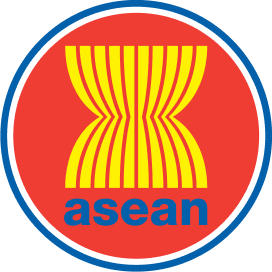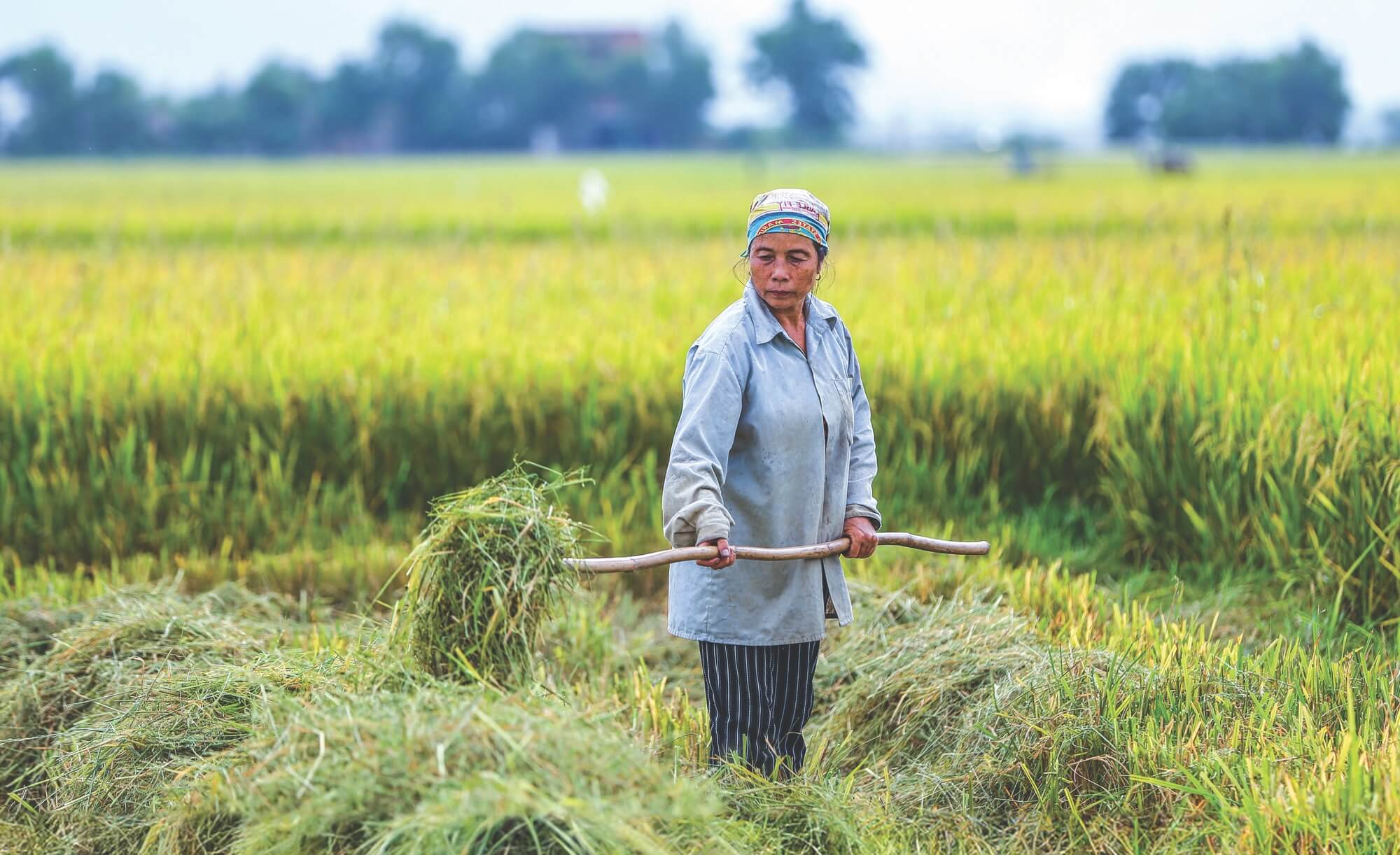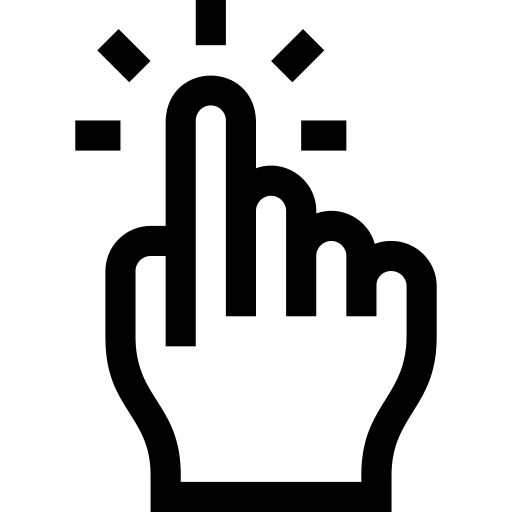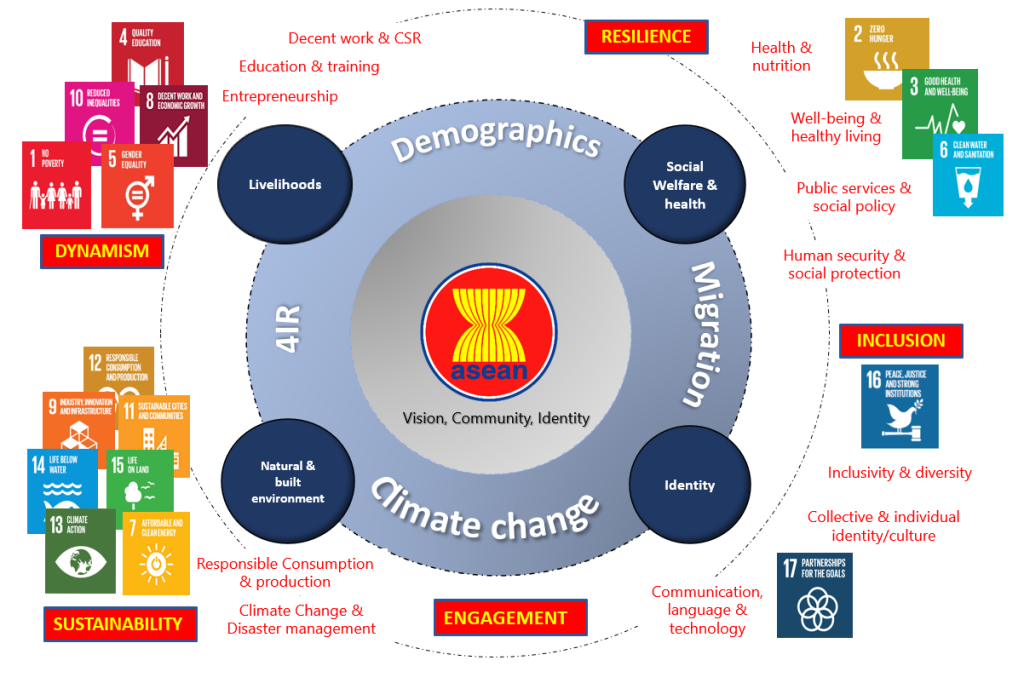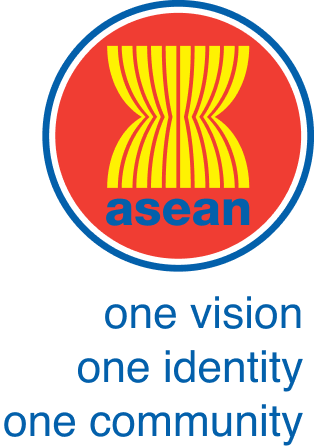

The ASEAN Development Outlook (ADO) is made to chart progress towards sustainable human development in the ASEAN region and to identify key challenges along with best practices for the future. To this end, it employs a ‘human development’-centred analytical framework (the capability approach) and a policy framework to sharpen practical insights (the foresight approach). Three broad research objectives guide the report: (1) to assess the ASEAN Socio-Cultural Community’s (ASCC) performance and goals against likely future challenges; (2) to evaluate progress and highlight best practices and areas for improvement across the region; and (3) to make policy recommendations to accelerate progress against existing goals and to propose new ones, if appropriate.
Given the broad scope and the complexity of some of the issues discussed, the ADO seeks to highlight a forward-looking approach to identifying and interacting with challenges, to designing flexible and contextually pertinent solutions and to rolling out experimental and accountable policy implementation. The ADO is a selective overview, not a systematic detailed policy review. It offers new perspectives and questions, rather than new evidence and answers. It sketches frameworks of problem diagnosis, rather than detailed universal blueprints.
Theoritical Framework
The ADO is guided by a theory of change together with a conceptual framework (the capability approach) and a policy framework (the foresight approach).
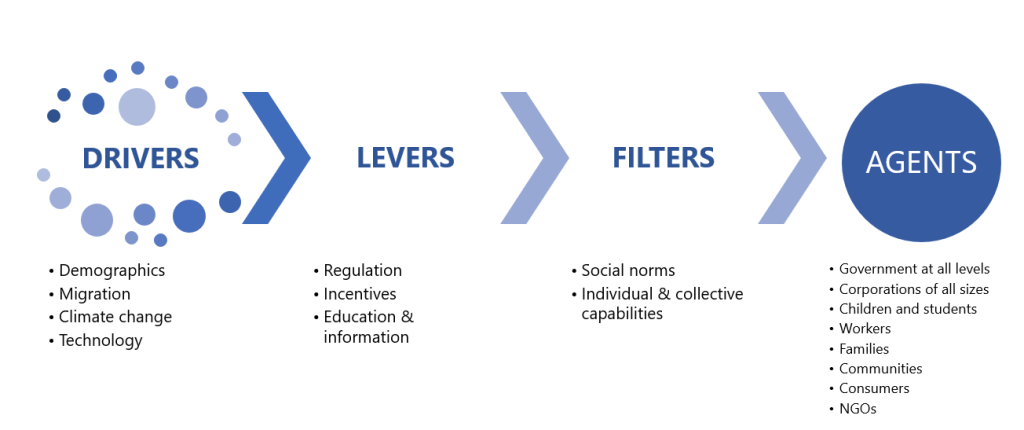
Caption: lorem ipsum dolor sit amet
This Theory of Change enables the research questions to be framed through a social rather than an economic or political lens. The resulting analysis focuses on agents, their capabilities and inter-relationships (particularly those of vulnerable individuals), and groups or communities.
Structure and Content of the ADO
The ADO is structured accross the four inter-related themes of identity, Environment, Livelihoods, and Social Welfare and Health, each of which closely aligns with the ASEAN pillars of Community, Vision and identity. These report themes also mirror in the policy priorities outlined in the ASCC Blueprint 2025 which consist of engagement, inclusion, sustainability, resilience, and dynamism. Furthermore, these themes also link directly to the social, economic, and environmental pillars of the global Sustainable Development Goals.
Cross-cutting themes
The ADO overlays four major drivers of change across the four themes. These drivers are demographics, migration, climate change and the 4th industrial revolution. We do not suggest that this list is exhaustive but use these four ‘drivers’ to demonstrate how policy choices made today can have the far-reaching effects on society, both in the present day as well as in the foreseeable future.
To read the full report, please download to the link above.
